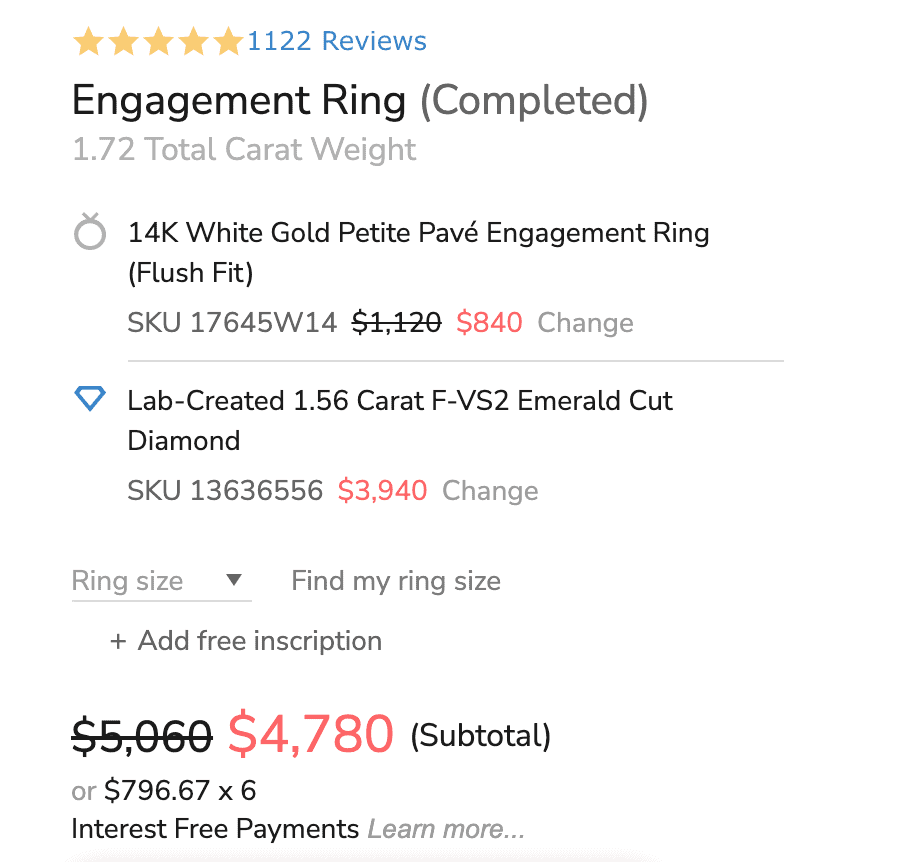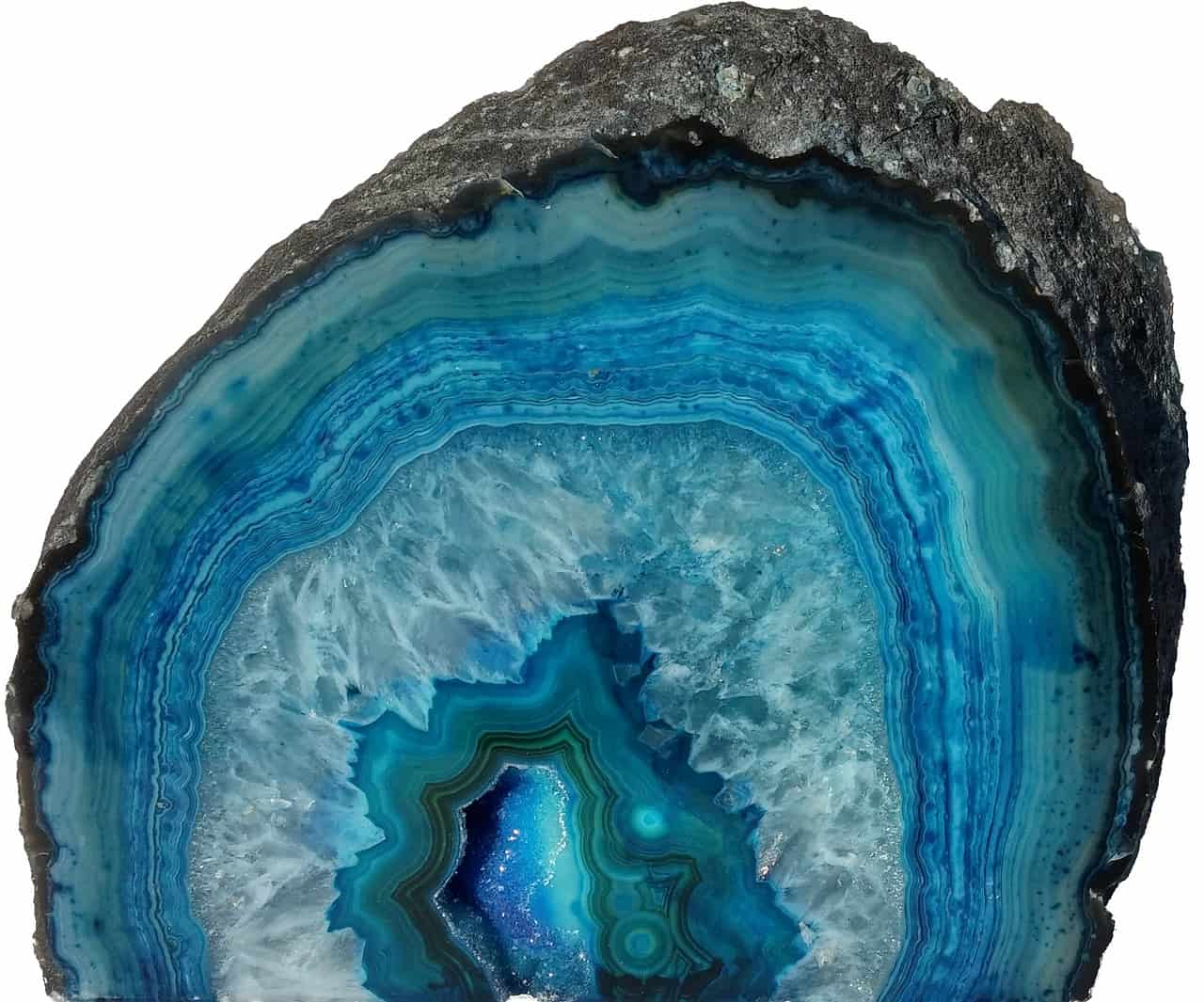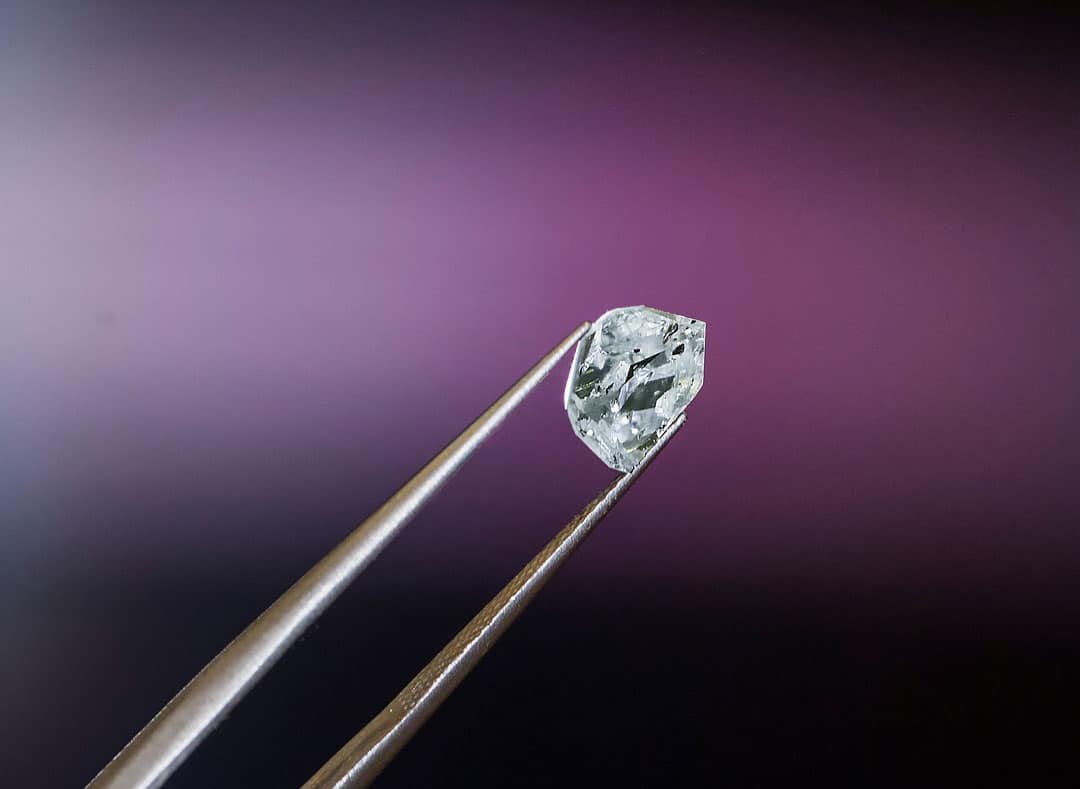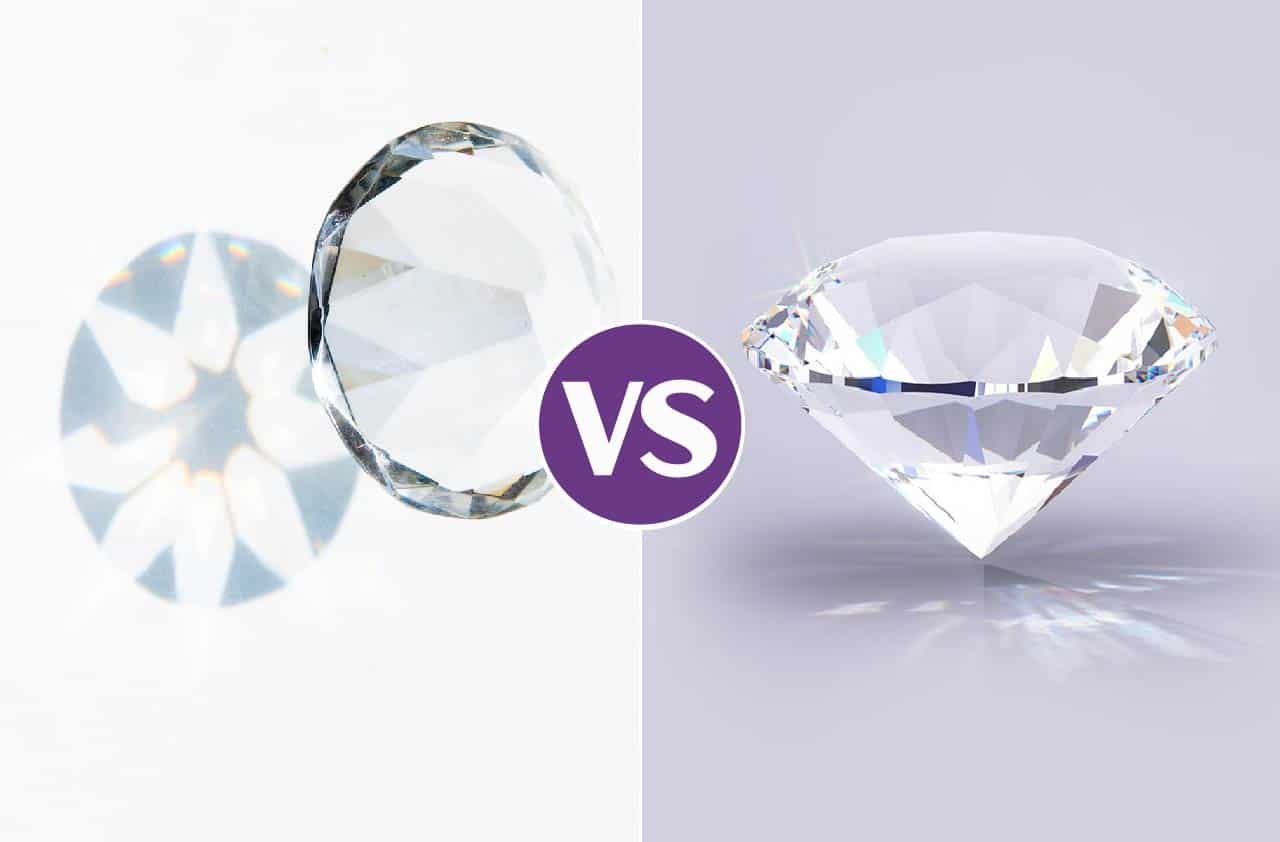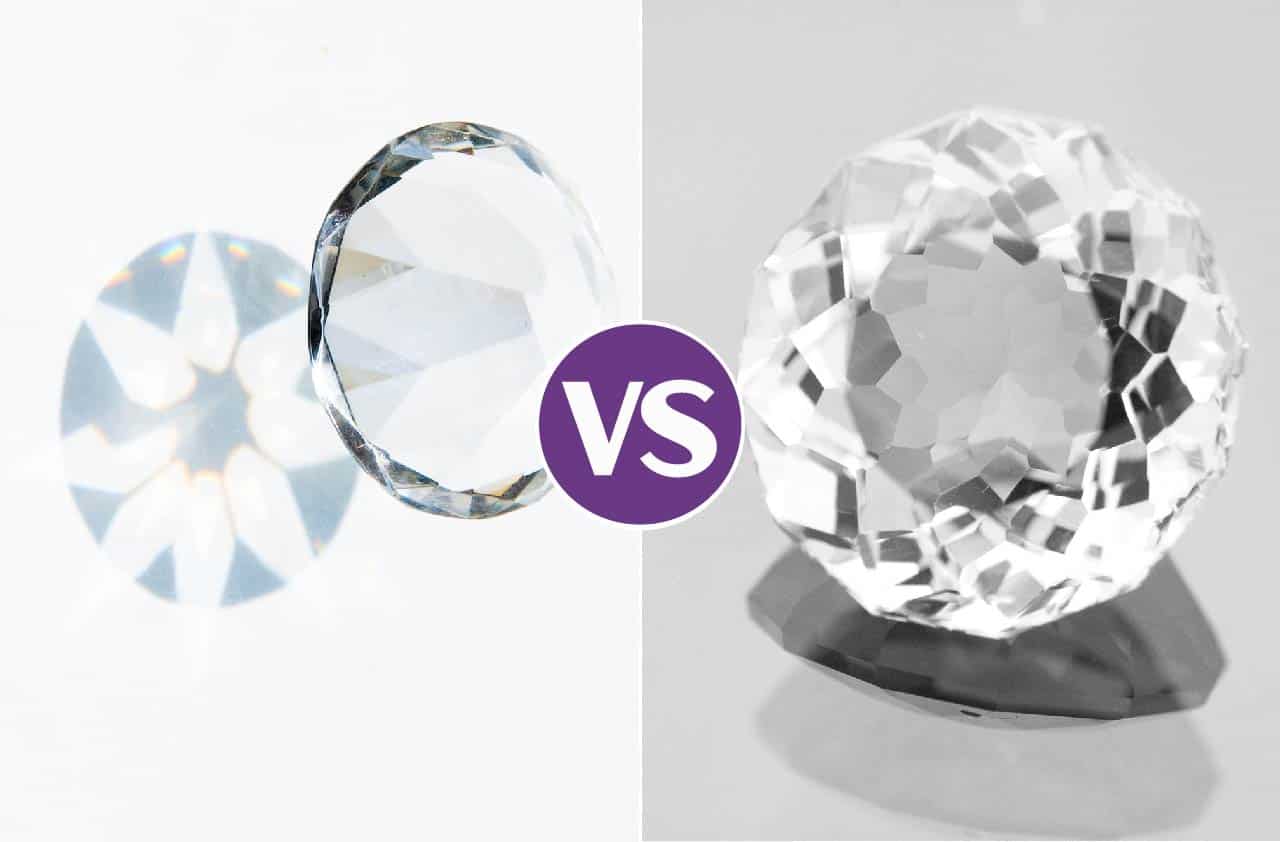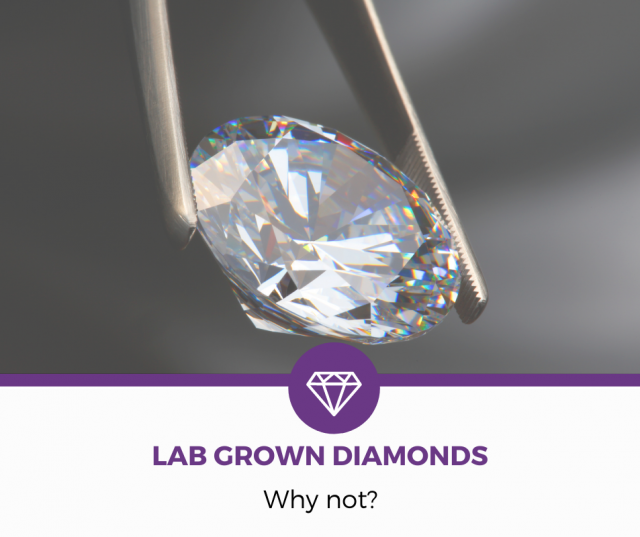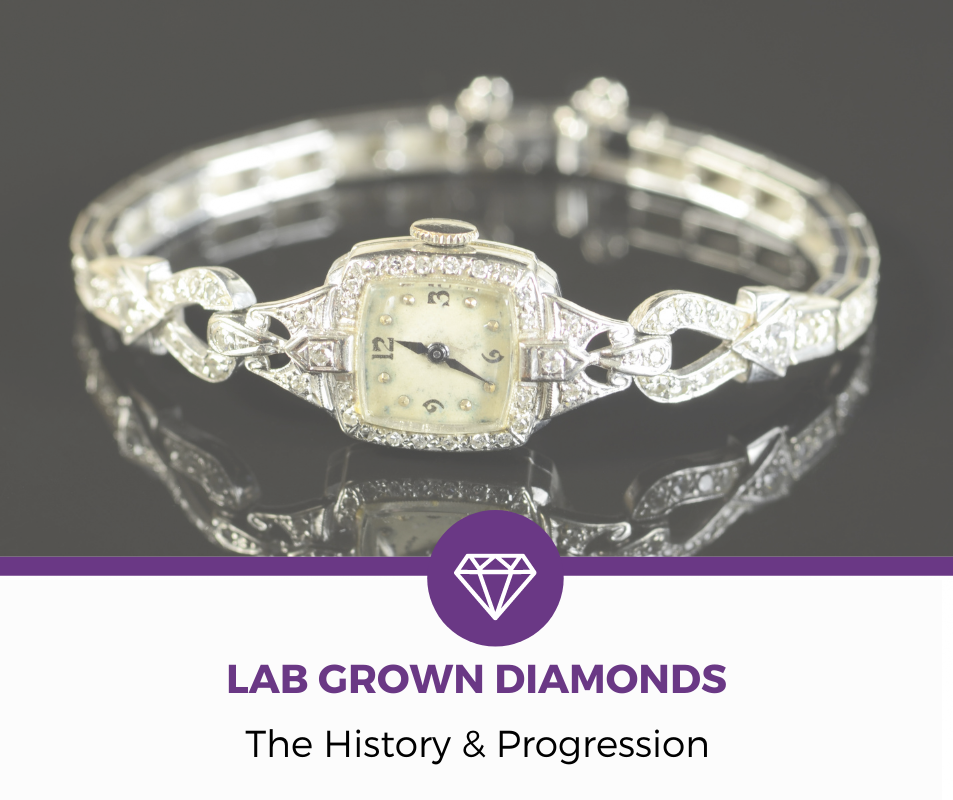Wondering which is better: lab grown diamonds or natural diamonds?
You're in the right place.
In this Learning Guide, I'll answer the most popular questions asked about these diamonds like:

Lab Grown Diamonds vs Natural Diamonds: Origin
Lab-Grown Diamonds
After learning what a lab grown diamond is, a lot of people are surprised to find that they have been around since the 1950s. After all, they've only become popular in the last 20 years or so.
The great news is that lab-grown diamonds don't need 3 billion years to be ready for the market. For small sizes, lab-grown diamonds will be ready in about a month, thanks to the wonders of technology.
Lab created diamonds are made using two main processes:
- High Pressure High Temperature (HPHT): a diamond seed is placed into a piece of pure carbon. The carbon is put into a chamber where high temperature and high pressure turns into carbon crystals.
- Chemical Vapor Deposition (CVD): a diamond seed is placed into a smaller vacuum chamber and filled with carbon-rich gases, usually methane.
Read also: CVD vs HPHT Diamonds
Chemical vapor deposition diamonds and high pressure high temperature diamonds are both excellent processes to create a lab grown diamond. There's debate in the jewelry community as to which is better to create man made diamonds with. There's no concrete info to prove either better.
A lab created diamond has the same chemical, optical, and physical properties as an organic diamond. They are also graded the same way.
Lab grown diamonds are manufactured in many places, but the majority of them come from China and India. China holds over half of the distribution of lab grown diamonds.
Natural Diamonds
A mined diamond takes billions of years to form within the earth's crust. They are formed under extreme heat temperatures and high pressure. The conditions cause carbon atoms to form into earth grown diamonds.
Once formed, organic diamonds are pushed closer to the surface of the Earth by volcanic eruptions.
Diamond mining has a few different methods, but these are the most popular:
- Open-pit mining: uses trucks to excavate and separate mined diamonds from the diamond ore. Best for use close to the earth's surface.
- Hard rock mining: Extracts earth mined diamonds using tools to separate gems from ore.
- Block caving: Creating tunnels underground by blasting or drilling so the ore can be brought up.
Before ideal cut diamonds were invented in the 1970s, most jewelry was made of colored gemstones. But once a cutting technique for a mined diamond was born, it was game over for the jewelry industry.
Organic diamonds can be found in many different places including Canada, Africa, India, China, Russia, Botswana, and the United States.
Lab Grown Diamonds vs Natural Diamonds: Appearance
Lab created diamonds and nature formed diamonds are both capable of being tinted faint yellow or being colorless. Both of them can come in different colors as fancy colored diamonds.
However, there's some distinctions between the two. If I were to have a bag of SI2 clarity lab grown diamonds and a bag of natural diamonds with the same grades-I'd be likely to find more eye-clean diamonds in the lab diamond bag.
Other minerals come into contact with diamonds as they grow in the earth's natural growing environment. Many blemishes and flaws you see in diamonds are due to this. Some blemishes are done during the manufacturing process.
Lab created diamonds are isolated in a lab setting, so they don't come into contact with other impurities. They still have inclusions, but they're made of natural graphite and more appealing than certain types of inclusions in a rough organic diamond.
When evaluating and identifying lab created diamonds, you'll find them to have better clarity as a whole than mined diamonds. The same is true for color grading, but lab created diamonds are susceptible to their own tinting via blue nuance and brownish tints. They don't affect price either.
Diamond Simulants and Imitations
Any clear or colorless material can theoretically be a diamond or lab created diamond simulants. Many people confuse lab grown diamonds with simulated diamonds. Once again, lab diamonds are real diamonds.
I think if we'd stop calling them synthetic diamonds, cultured diamonds, and cultivated diamonds, people might start getting the hint. These all sound fake. And no one wants to buy fake diamonds.
A diamond imitation can be a sneaky scheme, or it can be a chosen alternative. Some people opt for a different gemstone that's colorless like a diamond and others are duped into buying what they thought to be a diamond. It can happen with lab grown diamonds too.
The most common diamond alternatives and imitation diamonds are:
- Moissanite: Most popular alternative with a high hardness of 9.5. It is the stone with the closest physical properties to a natural or lab grown diamond. Natural moissanite originally comes from the moon and is extremely rare. Only lab created moissanite is sold commercially.
- Cubic Zirconia: man made stone created for cheap in a rainbow of colors. Cubic zirconia has lower hardness than a lab grown diamond or a natural diamond. Swarovski crystals are a special type of cubic zirconia. Cubic zirconia comes in different qualities, but there's no official grading system for it. Different companies produce it, so you're not always sure how great your cubic zirconia jewelry really.
- White Sapphire: Comes natural or lab created, has silvery light, no rainbow light, needs to be cleaned frequently. Natural white sapphire is more rare, but can still be found pretty easily. It costs upwards compared to other simulant diamonds. Lab grown white sapphire is very affordable in a large carat weight.
Read also: Lab Diamonds vs Diamond Simulants
The best way to ensure you're buying a real diamond (natural and synthetic diamonds alike) is to buy a certified diamond. A diamond certification lets you know you're getting the correct diamond grading for your engagement ring or loose diamond.
But not every diamond lab should be trusted. Some diamond grading labs are more strict than others. Other grading labs are created by companies that manufactured diamonds, like Diamond Foundry.
You should only buy naturally occurring diamonds with grading reports from the GIA or AGS.
You should only buy a synthetic diamond grading report from GIA, AGS, IGI, or GCAL.
Lab Grown Diamonds vs Natural Diamonds: Price
The world has a pretty critical view about earth made diamonds. A big thanks goes to over-zealous corporations ramming the need for expensive diamond jewelry down our throat for years and years. Here's looking at you, DeBeers and Signet Jewelers.
Natural diamonds are seen as an expensive and unnecessary price for something so small to a lot of young couples these days. That's why many of them are turning to lab diamonds instead of buying a natural diamond.
A synthetic diamond is usually listed as between 20-30% less expensive than a mined diamond of the same grades. Often times, they can also be found at 40-70% cheaper if you're comparing to a brick and mortar retailer.
There's a few different reasons why lab grown diamonds are much cheaper than natural diamonds. It has nothing to do with a corporate scam. The process is much cheaper to create lab grown diamonds than it is to mine nature grown diamonds.
Think about it.
Lab grown diamonds don't need to be mined. Instead of need to hire a bunch of miners to separate ore, there's no ore needed. Diamonds seeds are placed into the lab diamond chambers. The only thing gemologists need to create lab diamonds is the chamber and a small diamond seed. The chamber itself takes care of the rest.
There's no need to buy expensive equipment or explosives. It's also less expensive because it's time-efficient.
Lab created diamonds can be grown in a few as three weeks, but bigger lab diamond carat weight ranges take around a month.
Naturally formed diamonds are organic. Organic diamonds occur among a number of different minerals and impurities. Most rough organic diamonds have inclusions and blemishes in them. Some impurities give them color.
Not all organic diamonds are gem quality diamonds. Nearly all diamonds excavated within 1,000 pounds of diamond ore aren't gem quality. These go on to be used for more industrial methods.
With lab diamonds, they all become gem quality.
Now, let's see the numbers.
Here's a 1.5 carat emerald cut lab grown diamond engagement ring from big name retailer, Kay Jewelers. The total weight of the ring is 1 3/4 approximately. The clarity is SI2 and the color grade is F. It comes with an independent certification, unnamed.

Now here's a similar lab created diamond engagement ring I designed over at online diamond retailer, James Allen. They don't carry emerald cut diamonds with clarity below VS2, but the other grades are the same.
Even with these small distinctions that should make James Allen's engagement ring more expensive, it's still over $500 less expensive than Kay's. And that's not even comparing the original price, just the sale price.
Lab grown diamonds are less expensive than natural diamonds of the same grade.
Lab grown diamonds from an online retailer are less expensive than buying at a major corporate jewelry store.
Lab Grown Diamonds vs Natural Diamonds: Value
Just when it seems like lab diamonds are too good to be true, all good things have a weakness. For a lab created diamond, it's the overall value.
Resale Value
If you purchase a natural diamond engagement ring, they say it loses 1/3 of its resale value as soon as you leave the jewelry store.
For a lab diamond, that resale value virtually ceases to exist. You can return it of course, or resell it on a marketplace site. You will have a tough time finding a lab grown diamond company that does trade-ins or a pawn shop that will let you sell your lab diamond to them.
The price of lab created diamonds is always fluctuating, so a jewelry store can't afford to take a loss on a lab grown diamond that has been traded back to them. Natural diamonds are a little different.
Many online and brick and mortar retailers offer trade-ins for a natural diamond engagement ring. Most natural diamond trade-in policies require you to spend at least 2x the amount of your original engagement ring.
Investment Value
If lab diamonds don't have good resale value, you've probably gathered they don't make great investments. That's often one of the biggest downsides natural diamond advertisers try to sell you on.
And they're right. They don't.
But here's a secret.
A natural diamond doesn't either.
In actuality, colorless diamonds don't have great investment value.
If you want to invest in diamonds, go for fancy colored diamonds. Natural colored diamonds are more rare and valuable than most natural diamonds that are colorless.
That's with the exception of fancy yellow diamonds. Yellow diamonds with a vivid yellow hue and in a high carat weight are rare. Light yellow lab grown diamonds are more affordable than other light colored diamonds.
Lab diamonds also come in fancy lab colored diamonds. These lab diamonds allow customers to have the look of a rare colored diamond without as high of a cost.
Many would still consider a colored lab grown diamond an expensive purchase.
Lab Grown Diamonds vs Natural Diamonds: Conclusion
So, now that you know how a lab diamond and an organic diamond forms, you're probably wondering which is better.
The truth is, both lab diamonds and natural diamonds will make a beautiful engagement ring.
Lab diamonds are real diamonds that cost less a natural diamond.
They don't make great investments, but they're great on the wallet. They allow people to purchase real diamonds in grades they couldn't have afforded buying with a natural diamond.
Likewise, a natural diamond is a perfect option too. There are many ways to maximize your budget and get a beautiful eye-clean diamond.
The point is, lab diamonds shine just as brightly as mined diamonds. You should scour lab grown diamond reviews to pick the one that fits your budget and situation.


